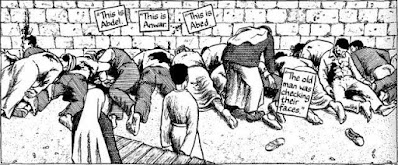This week we are discussing web comics, motion comics and the future of comics generally.
Please complete all your blogposts before Friday, Dec. 18 and as the most recent post to your blog include the sum of all the points you feel you have earned by your reading and writing, as well as the number of Zoom classes you have missed. I will be reading the blogs and confirming final grades the next day.
For reading this week, links to various web comics are listed below. maintained in the blog entry for this week on the online course syllabus as well as below. You are encouraged to mediate a webcomic, motion comic, or any comic that you want to bring to our attention by describing it and describe who might be interested in it. Link to it if you can and discuss its value, importance, or defining characteristic.
https://www.loc.gov/collections/webcomics-web-archive/
One of the most interesting multi-modal comics/visual narratives produced recently is 17776 or What Football will Look Like in the Future. This is well worth looking at as it explores a wide range of possibilities in the web-based visual narrative.
Another major work of comics in alternative formats is Trash Mountain a long form GIF comic by Kelton Sears. It can be read online here.
If you are looking for an augmented reality comic I am suggest Masters of the Sun by the Black-eyed Peas which has to be purchased as well as the downloadable app that is required to unleash its augmented reality aspects.
Here is a link to a review of The Best 15 Web Comics You Should Be Reading, or this recent list of 10 Great Webcomics, or if you can't get enough web comics, here is a curated list of 100 Top Webcomics.
About this time of year the latest retrospective lists will be coming out, I recommend you look at those as a good start.
Here are a few more recent links I have enjoyed reading.
Here is a link to Wind Rose by Aleksandra Ferentc who is in this class this semester and maintains this web comic.
Miss Abbott and the Doctor by Maripaz Villar
Meg, Mogg and Owl by Simon Hanselmann
Hip Hop Family Tree by Ed Piskor
Oyster War by Ben Towle
Ducks by Kate Beaton
Falling Sky by Drax Tran-Caffee
Stand Still, Stay Silent a post apocalyptic story with elements of Nordic mythology by Minna Sundberg
Digger by Ursulla Vernon has a large archive and sustains reasonably well through its large number of pages.
Lady of the Shard very interesting monchromatic web based comic experiment
Below is a link to a very interesting flash comic that explored some of the ideas in next generation sequential art:
http://balak01.deviantart.com/art/about-DIGITAL-COMICS-111966969
This is a short comic and I recommend viewing it. Here is another link to a scrolling horizontal comic with excellent special graphic effects called Delta: First Word
http://www.electricsheepcomix.com/delta/firstword/
What has Happened to Me by Tomomi Shimizu














%2001%20Heritage%20FC.jpg)





